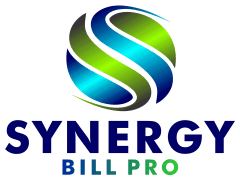Navigating the complex world of healthcare requires constant vigilance and adaptability. In particular, utilization review (UR) poses unique challenges that demand precise strategies and thorough knowledge. These demands are becoming even more intricate as innovations in data analytics and artificial intelligence continue to reshape the landscape. For many healthcare administrators, staying current with these trends is not just a professional necessity but also a source of considerable stress.
Healthcare providers should be aware of key utilization review trends such as increased use of data analytics, greater focus on population health management, and the emphasis on value-based care. Additionally, technological advancements like electronic health records and case management tools are shaping the future of utilization review.
Current Trends in Utilization Review
With technological advancements and a shift towards value-based care, data analytics have become an integral part of utilization review processes. Providers are increasingly relying on data-driven insights to predict patient needs more accurately, leading to improved care planning and better resource allocation. The ability to access and analyze comprehensive patient data allows for a more personalized approach, ultimately enhancing the quality of care delivery.
Imagine being able to proactively identify high-risk patients and tailor interventions to meet their specific needs, all through the power of data analysis. This not only optimizes the efficiency of healthcare services but also enhances the overall patient experience by ensuring that their care aligns with their individual requirements.
Population Health Management
Utilization review has expanded its scope to encompass population health management strategies. By integrating utilization review with population health initiatives, healthcare providers can focus on proactive measures for preventive care and chronic disease management. This integrated approach aims to reduce hospital admissions and readmissions by emphasizing early interventions and continuous monitoring, ultimately fostering a healthier community.
A paradigm shift is occurring in healthcare, moving away from reactive care models towards a proactive stance with a strong emphasis on population health management. Through robust utilization review practices, providers can address the broader health needs of communities, aligning with preventive care measures that lead to better health outcomes for individuals and populations alike.
Emphasis on Value-Based Care
Utilization review processes are increasingly mirroring the transition from fee-for-service to value-based care models. This shift realigns the focus from the sheer quantity of services provided to prioritizing quality outcomes. By emphasizing value-based care, utilization review endeavors to ensure that every healthcare service contributes positively to patient satisfaction while driving down costs.
Providers are steering away from traditional fee-for-service structures and embracing value-based care models that hold them accountable for delivering high-quality care efficiently. This model not only fosters collaboration between different stakeholders but also incentivizes the provision of comprehensive, coordinated care that resonates with patient preferences, leading to better health outcomes at lower costs.
These trends are making a big difference in how utilization reviews are done. There is more of an emphasis on using valuable insights from data analytics, combining population health management strategies, and aligning with value-based care models to improve patient outcomes and healthcare delivery. Understanding the foundations of utilization review is crucial to realizing the potential impact of technological innovations on refining this critical process.
Technological Advancements in Review Processes
Artificial intelligence (AI) has become integral to various healthcare processes, and utilization review is no exception. AI algorithms can rapidly analyze large datasets, identify patterns, and predict patient needs, streamlining the review process. This reduction in the workload on human reviewers and the speedier decision-making process significantly impact healthcare providers’ ability to deliver quick and accurate care to their patients.
Imagine having to sift through countless patient records manually to identify patterns or predict future needs. It’s a daunting task that not only consumes a tremendous amount of time but also leaves room for human error. AI automates the analysis process, freeing up valuable time for healthcare professionals to focus on direct patient care.
Electronic Health Records (EHR)
The integration of electronic health records (EHR) into the utilization review process has been a game-changer. EHR systems offer real-time access to patient data, allowing seamless reviews and coordination among care teams. The ability to access patient information at any given moment improves the accuracy and efficiency of utilization reviews. Instead of relying on physical files or outdated digital record-keeping systems, EHR offers a streamlined approach that ensures everyone involved in a patient’s care has access to consistent and up-to-date information.
Interoperability Enhancements
Interoperability refers to the ability of different systems and organizations to work together seamlessly. When it comes to utilization review, interoperable systems ensure that all healthcare providers can access consistent and up-to-date patient information. This minimizes delays and discrepancies in the review process, thereby improving overall efficiency.
These technological advancements are transformative forces that shape the future of healthcare, enabling healthcare providers to offer better, quicker, and more accurate care while reducing the potential for errors. The impact of these technological advancements is reshaping utilization review processes, paving the way for improved efficiency and better patient outcomes. With AI integration, EHR systems, and interoperability enhancements, healthcare providers have powerful tools at their disposal to streamline their review processes and deliver exceptional care.
Impact on Patient Outcomes
When discussing patient outcomes, the focus is on how well a patient fares during and after their treatment. Ultimately, the goal is to ensure that everyone recovers as swiftly as possible.
One of the significant contributions of utilization review is ensuring that all healthcare providers are aligned with a patient’s care, known as care coordination. When done effectively, with seamless information flow among all involved parties, patients are less likely to misinterpret their care plans or miss appointments. It’s akin to having a cohesive team all operating from the same playbook.
Reducing the likelihood of recurrent hospital visits not only alleviates the burden on patients but also results in cost savings. Anyone who grasps the significance of getting patient treatment right the first time will surely appreciate this decrease in hospital readmissions. Moreover, informed and engaged patients tend to take better care of themselves. Understanding what they need to do to improve their health and why it’s essential increases their adherence to treatment plans. Therefore, dedicating extra time to educate patients can ultimately contribute to their improved well-being.
It’s evident that when patients have a comprehensive understanding of their health needs and receive coordinated support from various healthcare providers, it can lead to remarkably positive outcomes!
Cost Management and Reimbursement
In today’s ever-changing healthcare landscape, cost management is more important than ever. As a healthcare provider, equipping yourself with effective strategies to navigate the complex world of healthcare reimbursements while ensuring high-quality care for your patients is crucial.
One way to effectively manage costs and streamline reimbursements is by prioritizing precertification and authorization. Obtaining precertification for services means that they are pre-approved by the patient’s insurance plan, thereby reducing the likelihood of denials and minimizing out-of-pocket expenses for patients. This not only ensures that the services are covered but also provides financial clarity to both the healthcare provider and the patient. The reduction in denials accounts for improved revenue cycle management, leading to better financial stability for the provider and increased satisfaction for the patient.
As a healthcare provider, it is crucial to ensure the efficient use of resources. This entails ensuring that patients receive the appropriate level of care, thereby preventing overutilization or underutilization. Overutilization can lead to unnecessary costs, strain on resources, and potential risks to patients’ health from unnecessary procedures or tests. On the other hand, underutilization may result in missed opportunities for early intervention or essential treatments, ultimately impacting patient outcomes. Optimizing resource use not only controls costs but also enhances the quality of care provided.
Aligning financial incentives with patient outcomes is integral in today’s healthcare environment. This is where value-based contracts come into play. Engaging in value-based contracts incentivizes providers to focus on efficiency and quality of care, thus aligning financial incentives with patient outcomes. By emphasizing value over volume, providers are encouraged to deliver high-quality, cost-effective care and achieve better patient outcomes. This contributes to a shift towards a more patient-centered approach while simultaneously promoting financial sustainability for healthcare providers.
Addressing Denials and Compliance Issues
One of the most significant challenges encountered by healthcare providers is managing claim denials, which not only impact revenue but also create additional administrative work. This makes implementing robust denial–management programs essential. These programs help identify common reasons for denials, such as incorrect coding or a lack of medical necessity documentation, and then formulate strategies to address them proactively. By doing so, healthcare providers can enhance revenue cycle efficiency, reduce administrative burden, and improve overall financial performance.
In addition to denial management, regulatory compliance is a critical aspect of utilization review. Adhering to regulations such as the CMS Conditions of Participation ensures that utilization review processes meet the required standards. This not only helps in avoiding compliance-related penalties but also contributes to maintaining high-quality patient care. Healthcare providers must make sure that all services are compliant and have the necessary documentation. Failure to comply with regulatory standards can result in costly fines and reputational damage, emphasizing the importance of maintaining a strong focus on regulatory compliance.
Continuous training for staff on the latest guidelines and compliance requirements plays a pivotal role in mitigating compliance risks. Regular staff training ensures consistent adherence to best practices and minimizes the likelihood of non-compliance. As regulations and reimbursement policies continue to evolve, healthcare providers must invest in ongoing education and professional development for their staff. By staying abreast of the latest industry changes, staff members can effectively navigate utilization review challenges and contribute to maintaining a culture of compliance within the organization.
Successfully addressing denials and compliance issues requires a multifaceted approach that encompasses denial management programs, regulatory compliance measures, and ongoing staff training. These elements collectively contribute to the efficient operation of utilization review processes while safeguarding the financial health and reputation of healthcare organizations.
Best Practices for Providers
Conducting regular internal audits of utilization review processes is not just a regulatory requirement; it’s a golden opportunity to uncover areas for improvement and ensure ongoing adherence to best practices. Audits act as a mirror, reflecting the alignment between policies and actual procedures. By systematically scrutinizing documentation and decision-making, providers can better pinpoint where they may need to reinforce staff training or streamline workflows.
These audits don’t just focus on spotting mistakes; they’re also about recognizing achievements. They provide a platform to commend team members who have consistently excelled in adherence to guidelines and quality standards. Acknowledging these efforts fuels motivation and reinforces a culture of excellence within the organization.
Collaborative Approach
No provider operates in isolation; patient care is an intricate web of interactions among different teams. Encouraging collaboration among case managers, utilization review staff, and clinical teams is pivotal for ensuring a cohesive approach to patient care and resource management. By fostering an environment where interdepartmental communication is valued and promoted, providers can create an ecosystem where different perspectives converge with the common goal of optimizing patient outcomes while ensuring efficient resource use.
This collaborative approach isn’t just about shared decision-making; it’s about creating an atmosphere where each stakeholder understands the role of the other in the continuum of care. This synergy minimizes redundancy, reduces errors, and ultimately leads to more effective resource allocation.
Technology Adoption
Investing in advanced utilization review tools and technologies isn’t just a buzzword; it’s the answer to boosting the efficiency, accuracy, and overall effectiveness of the review process. With cutting-edge solutions now available in the market, providers have the opportunity to streamline their utilization review operations, enhancing both the speed and accuracy of decision-making processes.
Additionally, modern technology enables real-time access to critical data, empowering providers to make informed decisions promptly. From electronic health records to sophisticated case management tools, these resources are revolutionizing how utilization reviews are conducted.
Incorporating these best practices into daily operations ensures compliant and efficient utilization review and facilitates continual improvement toward optimizing patient care and resource management. Visit Synergy Bill Pro for more insights on the latest trends and tools that can elevate your utilization review processes.
Whether you’re fine-tuning existing processes or embarking on a journey toward improved utilization review, embracing these best practices can set you on a path to achieving higher standards of patient care and operational excellence. Call us at 561-849-3070!






